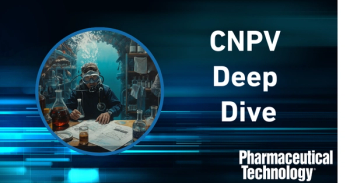
- Pharmaceutical Technology-08-01-2009
- Volume 2009 Supplement
- Issue 43
European Requirements for Pediatric Formulations
A summary of recent changes to European regulatory requirements for pediatric formulations.
Similar to the United States, authorities across the Atlantic also have changed the way pediatric formulations are regulated. In January 2007, the European Medicines Agency (EMEA) implemented a new "Pediatric Regulation" that requires pharmaceutical companies to submit a development plan known as the "pediatric investigation plan (PIP)" (this is essentially a drug-development plan) with their marketing authorization applications (known as new drug applications in the US) (1). As of July 2008, all new products in the European Union that have not been authorized in the European Union before Jan. 26, 2007, must contain the results of studies conducted based on a PIP unless a waiver or deferral has been granted (2).
According to EMEA, the new regulation "aims to facilitate the development and accessibility of medicinal products for use in the pediatric population, to ensure that medicinal products used to treat the pediatric population are subject to research of high quality, and are appropriately authorized for use in the pediatric population, and to improve the information available on the use of medicinal products in the various pediatric populations" (3).
Meant to ensure necessary data are obtained for children aged 0 to 17 years without subjecting them to unnecessary trials or delaying the authorization of drugs for adult use, the plan can be modified as information is gained (3). The PIP must include the drug's formulation and study descriptions and must cover children from infancy to adolescence. If children are not targeted to use a particular drug, a PIP is not required (e.g., Parkinson's disease does not tend to affect children, so drugs targeted to treat Parkinson's would not need a pediatric formulation) (4). In this case, however, the company must obtain a waiver from EMEA allowing it to forego a PIP. Also exempt from the Pediatric Regulation are generic drugs, hybrid medicinal products, biosimilars, and medicinal products that contain one or more active substances of well-established medicinal use (1).
Several incentives are included in the Pediatric Regulation. For example, manufacturers of older, off-patent drugs developed specifically for pediatric use can apply for a new pediatric use marketing authorization (PUMA) and, upon approval, obtain 10 years of data protection; orphan drugs receive 12 years (2). In addition, new drugs approved under the PIP receive a six-month patent extension. EMEA provides free scientific advice on pediatric development questions as well (5).
Another important component of the regulation regarding postmarketing authorization is that once a medical product is authorized for a pediatric indication, the holder of the marketing authorization must, within two years of the date of authorization, place the product on the market. EMEA will make the deadline public to encourage compliance (3). In addition, if the manufacturer wishes to discontinue marketing its product after the authorization period has expired, then it must transfer the product data to a third-party (3).
In September 2008, the European Commission published the final version of a guideline on the "Format and Content of Applications for Agreement or Modification of a PIP and Requests for Waivers or Deferrals and Concerning the Operation of the Compliance Check and on Criteria for Assessing Significant Studies" (5). The guideline is meant to clarify what should be included in PIP documents and to define the criteria for pediatric studies started before and completed after the entry into force of the Pediatric Regulation (5).
To further help industry comply with the new requirements, EMEA issued in November 2008 a concept paper on the "Development of a Quality Guideline on Pharmaceutical Development of Medicines for Pediatric Use" (6). The consultation period for this paper ended in November 2008 and at press time, a draft guideline based on the comments had not yet been issued. Once completed, the new guideline is expected to establish clear harmonized recommendations on all aspects to be considered in the development of a specific product (e.g., dosage form, excipient sensitivity) for the use in, or a subset of the, pediatric population, according to the concept paper (6). The guideline is also meant to help facilitate procedures for PIPs and for marketing authorization applications and variations (6).
On Jan. 26, 2009, another portion of the Pediatric Regulation went into effect. For all new drug indications (e.g., a new route of administration or a new dosage form) of an already authorized, patented drug, a PIP or deferral/waiver is required with a company's marketing authorization application (2). In addition, as of June 12, 2009, EMEA will only accept electronic applications for PIPs, waivers, modifications, and compliance checks.
For more on this topic, see "
References
1. EMEA, "Frequently Asked Questions on Regulatory Aspects of Regulation (EC) No 1901/2006 (Paediatric Regulation) Amended by Regulation (EC) No 1902/2006," (London, Sept. 2, 2008),
2. EMEA, "Better Medicines for Children: Overview of the European Medicines Agency's Role in the European Regulatory Environment for Paediatric Medicines," 2009.
3. Official Journal of the European Union, "Regulation (EC) 1901/2006 Of the European Parliament and of the Council on Medicinal Products for Paediatric Use and Amending Regulation (EC) No 1768/92, Directive 2001/20/EC, Directive 2001/83/EC, and Regulation (EC) No 726/2005, Dec. 12. 2006,
4. EMEA, "Paediatric Investigation Plans (PIPs), Waivers, and Modifications" (Brussels, Feb. 27, 2009),
5. EMEA, Guideline on the Format and Content of Applications for Agreement or Modification of a PIP and Requests for Waivers or Deferrals and Concerning the Operation of the Compliance Check and on Criteria for Assessing Significant Studies (2008/C 243/01), (Brussels, Sept. 24, 2008),
6. EMEA Committee for Medicinal Products for Human Use, Paediatric Committee, and Committee on Herbal Medicinal Products, "Concept Paper on the Development of a Quality Guideline on Pharmaceutical Development of Medicines for Pediatric Use," (London, July 29, 2008),
Articles in this issue
over 16 years ago
Growing Painsover 16 years ago
Pharma Industry Consortium Rx-360 Tackles Supply-Chain Securityover 16 years ago
Industry Outlook: Down But Not Outover 16 years ago
The Future of Pharmaceutical CMC Outsourcingover 16 years ago
Outsourcing Stability Studiesover 16 years ago
Waivers and Deferrals Under the Pediatric Research Equity Actover 16 years ago
Pediatric Formulations: Technical and Regulatory Considerationsover 16 years ago
Global Outsourcing: A Roundtable of Contract ManufacturersNewsletter
Get the essential updates shaping the future of pharma manufacturing and compliance—subscribe today to Pharmaceutical Technology and never miss a breakthrough.




